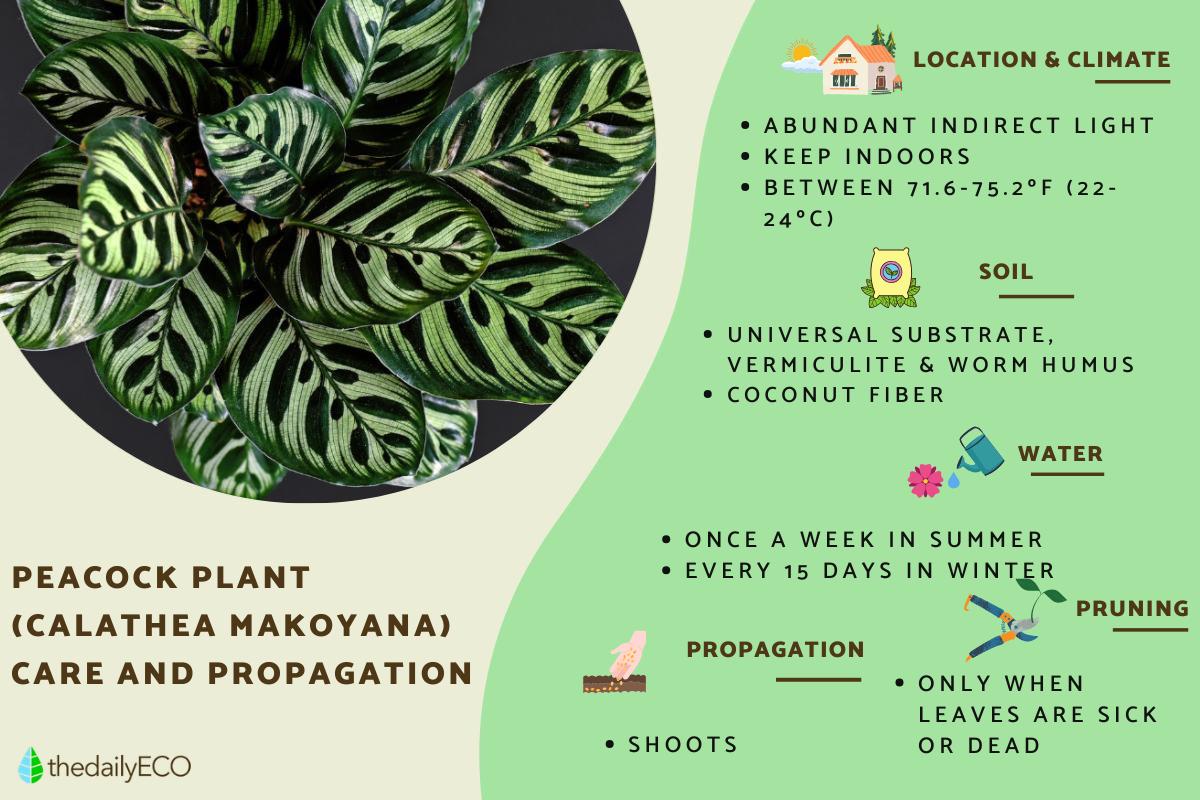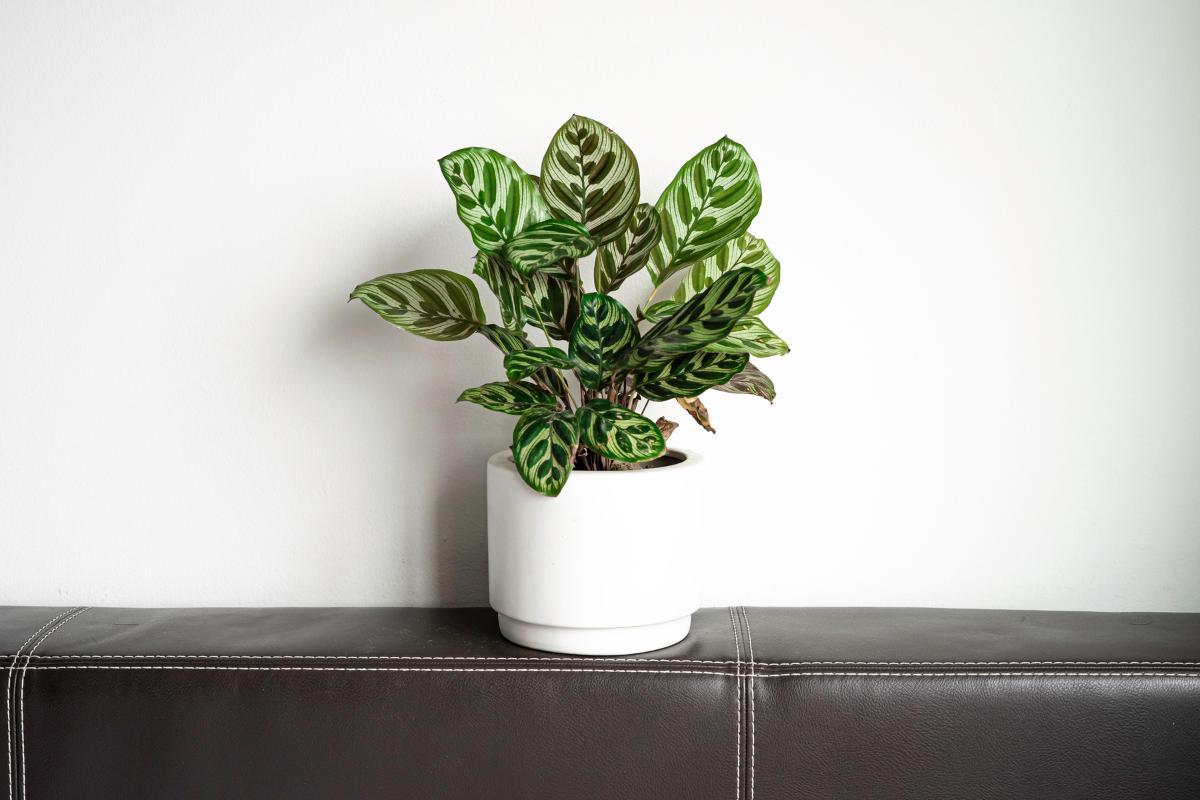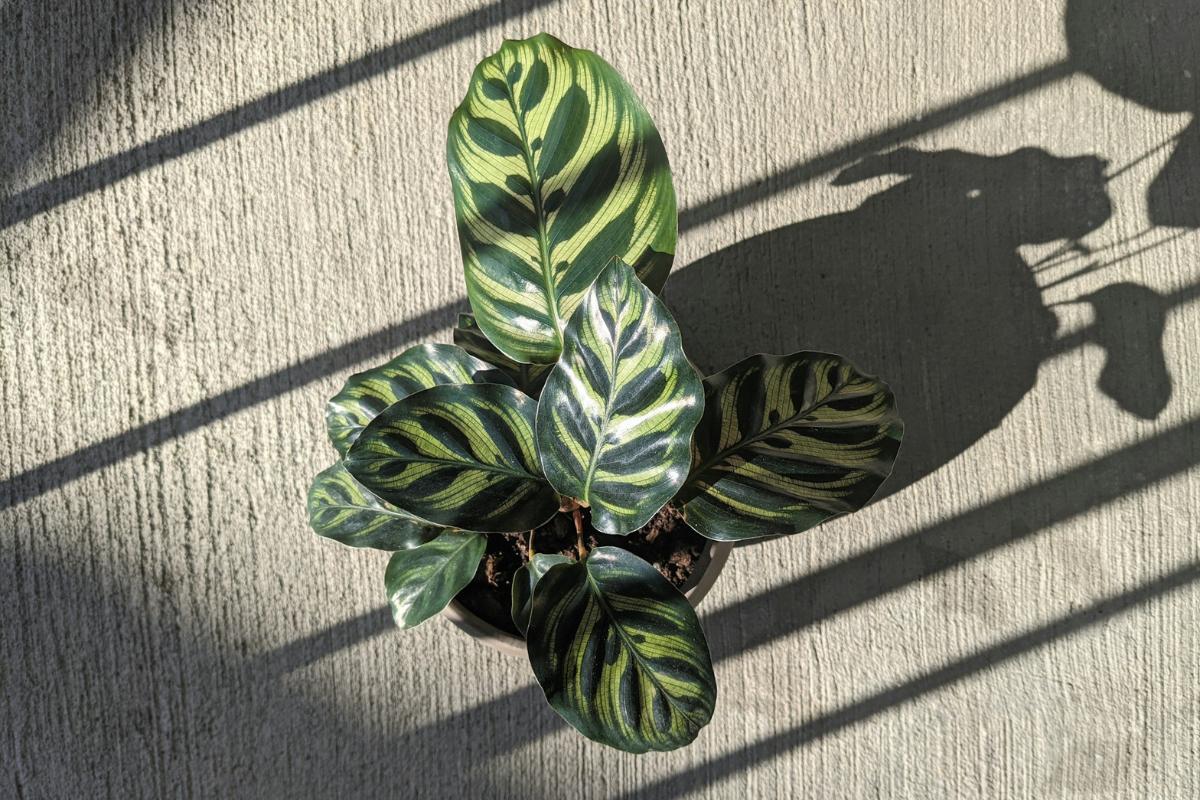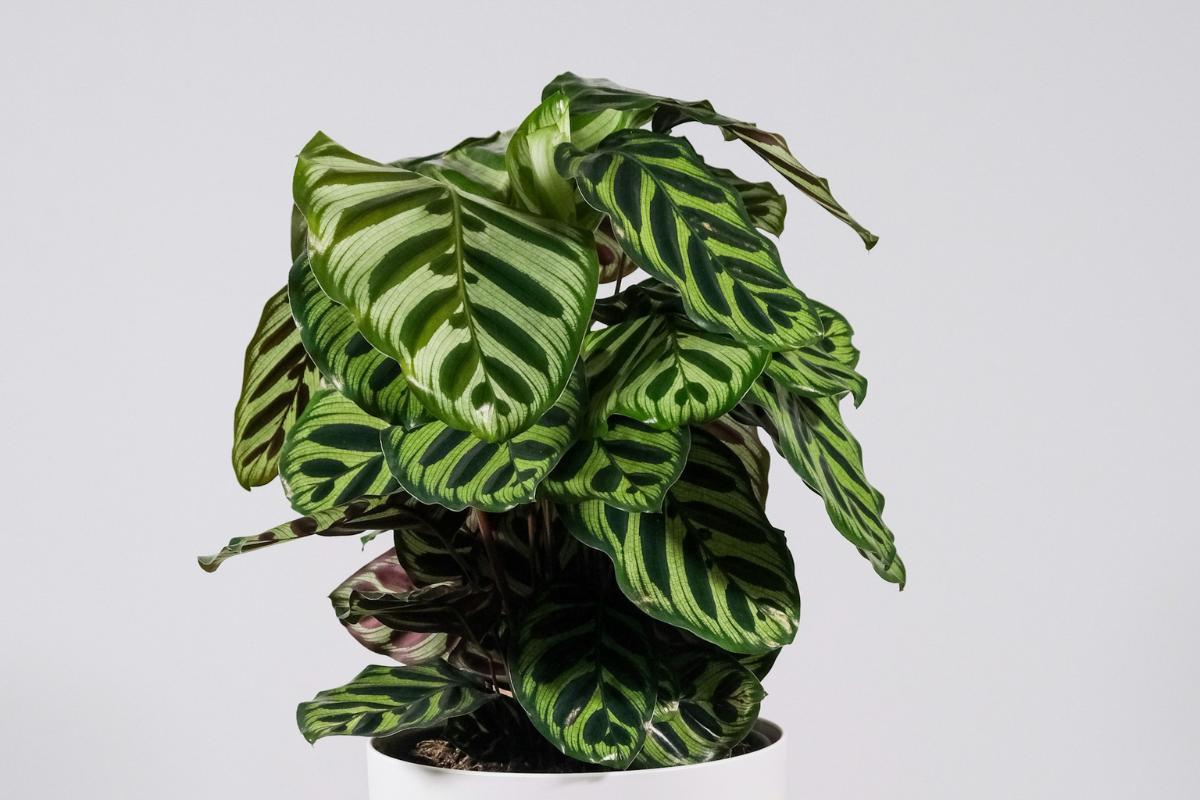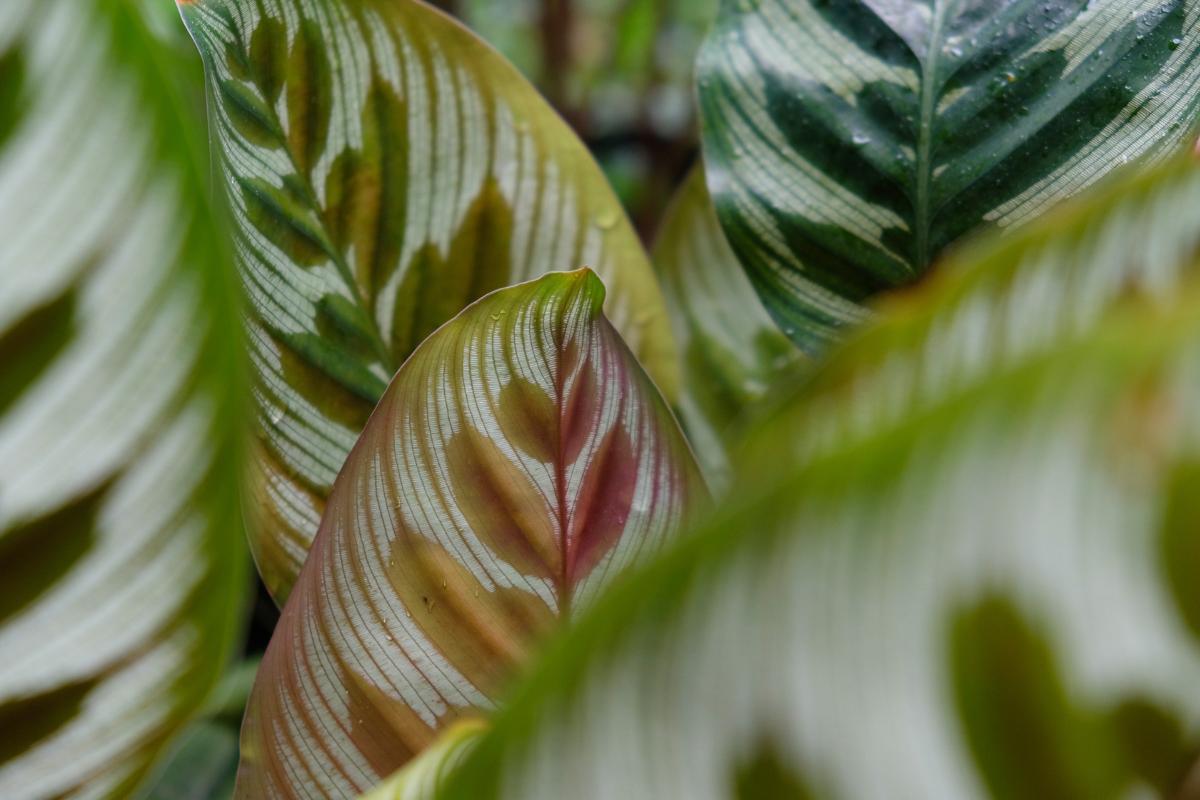Peacock Plant Care and Propagation

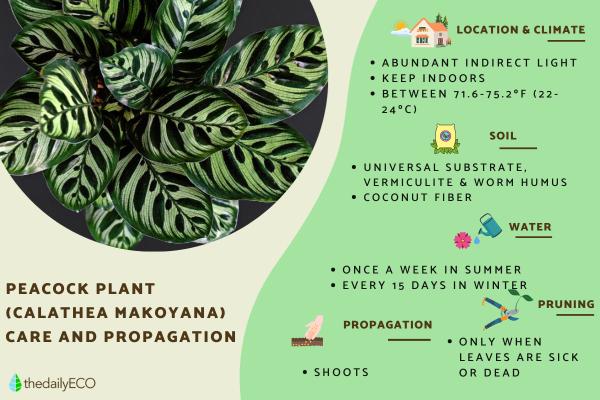
Also known as the cathedral windows plant, the peacock plant (Calathea makoyana) is a common houseplant which is known for its beautiful leaves more than its blooms. Although it can produce flowers in the right conditions, this does not often occur in the home environment. This doesn't detract from its beauty, since the peacock plant's leaves have spectacular natural designs which will brighten up any space. Since it is very resistant, it can survive with minimal care, but it will still need to be looked after properly. At thedailyECO, we share everything you need to know about peacock plant care and propagation.
Characteristics of peacock plants
Before we look at the specific care the peacock plant needs, we can take a look at some of its main characteristics:
- Calathea makoyana is a plant native to the south of the American continent.
- It is strong, resistant and vigorous.
- It is known as the peacock plant because the arrangement of the patterns on its leaves is reminiscent of the tail of the male peafowl.
- Its leaves are somewhat rounded in shape and have vibrant dark green color with stripes of light green tones. These can sometimes turn whitish. On the reverse side they are darker in color, sometimes even having purple coloration.
- It has been awarded the Royal Horticultural Society's Garden Merit Award for its outstanding aesthetic value.
- It is a compact plant, but can grow up to 1.6 ft (0.5 m) in height.
Find out what other types of calathea plants you can find in addition to the peacock plant.
Peacock plant light, temperature and location
It is an indoor plant that requires a few hours of filtered, but not direct, sunlight. It should always receive indirect light and be placed in semi-shade. It can be placed near a window up to two meters away. The temperature it requires is warm, due to its tropical origin, between 71.6-75.2ºF (22-24ºC).
The best location for the peacock plant to develop well is indoors. Place it inside the home or office near a window, away from cold air currents and never near heating or air conditioning. These tend to dry out the plant and can kill it. We should not place it in the garden either. Although it is from tropical environments, it does not like direct sunlight.
In addition to calatheas, take a look at the different types of partial-shade plants for your home.
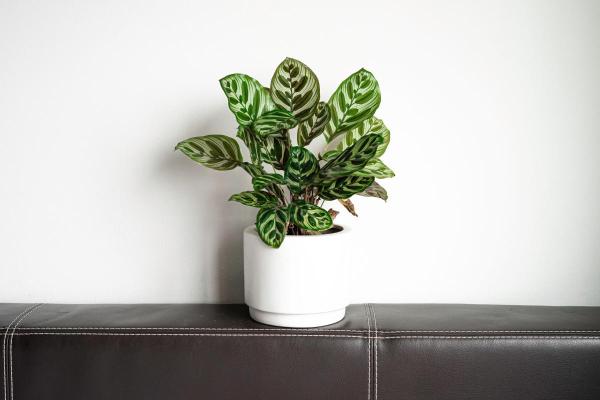
Peacock plant soil and fertilizer
The substrate that the peacock plant requires is one that retains moisture well. While the soil we use must be kept moist, it is also important to have higher levels of ambient humidity. It should never be dry or too cold. We can spray the leaves with water if we are having problems maintaining this humidity.
Damp soil will do the plant good, but you should not go so far as to flood the pot. A substrate mix of worm humus together with a universal substrate in equal parts can be used. Enriching it with coconut fiber and vermiculite is ideal. The substrate should be somewhat acidic with lots of minerals.
Fertilizer is essential for this plant. It requires fertilizer that allows it to recover the nutrients that the substrate loses with irrigation. You can add a layer of worm castings in spring or add universal liquid fertilizer.
Check out our related guide on how to make your own worm castings at home.
Watering peacock plants
Watering Calathea makoyana is perhaps the most important part of its care. This plant needs both a humid environment and soil. This humidity is not achieved by just adding water, but by ensuring that there is an ideal balance between light, environment and an appropriate substrate. Watering can be provided once a week in spring and summer, making sure that it remains moist but not waterlogged.
In autumn and winter it can be every 15 days. If the environment in which it lives is dry, we can water more often, but using less water in total. The pot must have holes through which at least ten percent of the irrigation water comes out. It is important to spray water on the leaves with a spray bottle to promote a humid environment.
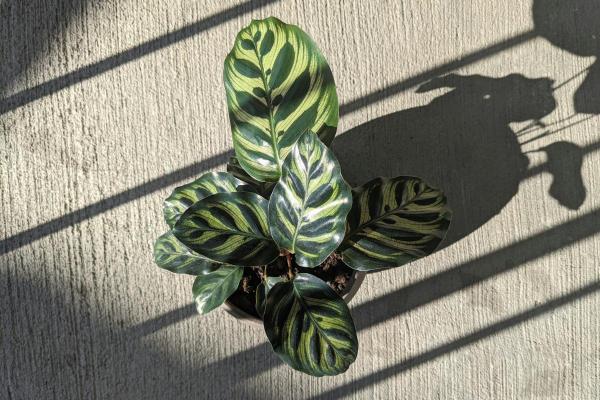
Pruning peacock plants
This calathea does not need pruning to grow better. However, maintenance pruning will help it to keep it healthier. To do this, you only need to cut or remove dry or diseased leaves or stems to prevent the plant from losing energy or having parts start to rot.
Discover what happens when a plant is not cared for with our article on why my monstera plant's leaves are turning yellow.
Peacock plant propagation
This plant will generate shoots around it, which can be separated to have new plants. When you want to reproduce a Calathea makoyana that already has shoots, you only have to separate the young plants or shoots but always being careful to separate the roots without damaging them. To complete the propagation, you can put these new plants in a pot, prepared with new soil and coconut fiber. You can improve with a few drops of growth hormone as an option.
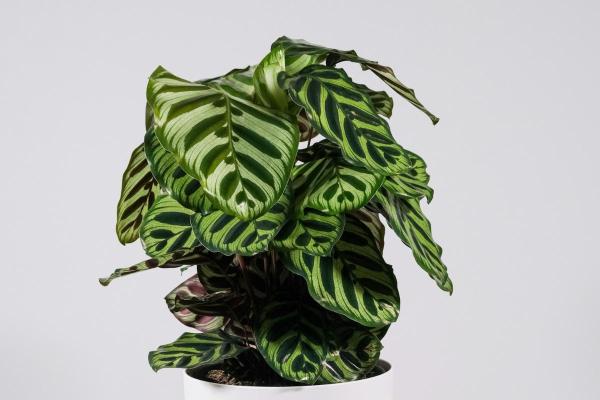
Peacock plant diseases and pests
Yellow leaves on peacock plant
Yellow leaves act as a warning sign, indicating they may soon turn brown. This is often caused by overwatering. Reduce watering temporarily or, if waterlogging is severe, replace the substrate and adjust the watering routine.
Dry leaves on peacock plant
If the leaves appear dry or crispy, the opposite approach is needed. Increase watering frequency, as the plant requires more humidity. Relocating it to a less sunny area may also help.
Dark or black leaves on peacock plant
Darkened leaves typically indicate overwatering. However, excess water differs from good humidity, which is influenced by factors like light, soil and environment. To address this, reduce watering and aerate the substrate by improving ventilation, relocating the plant or loosening the soil. If fungi are present, replace the soil entirely, wash the roots and replant in fresh soil.
Peacock plant leaves are falling off
Droopy leaves suggest a lack of chlorophyll which is produced with sunlight. Move the plant to a sunnier spot occasionally and reconsider its placement to ensure adequate light for healthy growth.
Learn about the types of chlorophyll and their functions with our related guide.
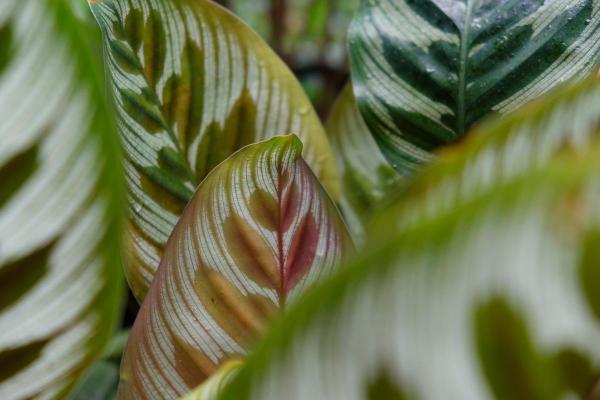
If you want to read similar articles to Peacock Plant Care and Propagation, we recommend you visit our Plant care and cultivation category.
- Rubio Coll, M., & Fernández Terricabras, M. (2018). The Great Book of Indoor Plants. Spain: De Vecchi, Editorial, SA.
- Rubio Coll, M., & Fernandez Terricabras, M. (2012). Encyclopedia of indoor plants. Spain: De Vecchi Ediciones.





